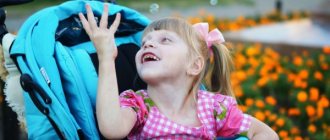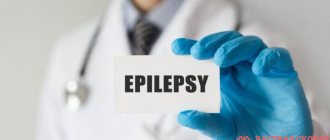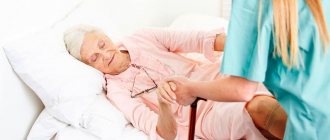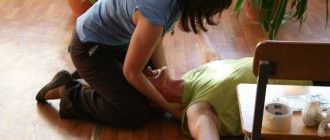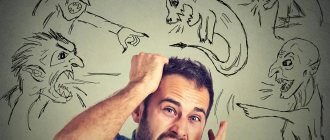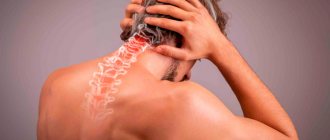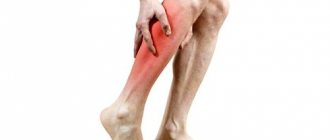Epilepsy is a neurological disease that affects the brain. Characterized by periodically recurring attacks of convulsions. This condition reduces the quality of life and negatively affects other body systems. According to statistics, every 100 people on earth suffer from epilepsy. At present, it has not been possible to determine the definitive causes of the disease.
At the Yusupov Hospital, experienced neurologists and epileptologists diagnose and treat sleep epilepsy. For this purpose, modern medical equipment and proven quality drugs are used. Individually selected therapy allows you to achieve positive results in a minimum amount of time.
What is epilepsy
Epilepsy attacks often occur at night. In this case, a group of neurons in the focus of excitation is activated. This provokes the appearance of convulsive syndrome. Epileptic seizures occur more mildly during sleep. Depending on the period of sleep the seizures occur, the following types of seizures are distinguished:
- Generalized. Characteristic of the period of awakening. At the same time, patients shudder. This form of seizures occurs in people of different ages. Goes away on its own without treatment. One of the reasons for the development is considered to be a failure of the nervous system, which is eliminated with age.
- Frontal. The pathological focus is localized in the frontal parts of the brain. Cramps occur during sleep. This form of epilepsy is hereditary. Characteristic of adolescence. Among the causes of frontal lobe epilepsy are the effects of psycho-emotional stress.
Expert opinion
Author: Georgy Romanovich Popov
Neurologist, Candidate of Medical Sciences
Epilepsy is one of the common neurological pathologies. Doctors distinguish different forms of seizures. One of them is sleep epilepsy. According to statistics, nocturnal attacks occur in 30% of patients. Convulsions during sleep are characterized by less severity compared to other forms of the disease. Nocturnal epilepsy is typical for children over 5 years of age. In rare cases, the disease will persist into adulthood.
Doctors at the Yusupov Hospital carry out a full range of diagnostic measures necessary to detect nocturnal seizures. For this, modern methods are used - EEG, CT, MRI. Based on the examination results, neurologists and epileptologists at the Yusupov Hospital develop an individual treatment plan. The drugs used are included in the list of the latest European standards for the treatment of nocturnal epilepsy. In addition, patients are provided with personalized preventive recommendations to reduce the risk of developing relapses of convulsive syndrome during sleep. The hospital's doctors treat both adults and children. An individual approach allows you to achieve positive results in a minimum amount of time.
No seizures or convulsions
Epilepsy is a sudden and unpredictable disease. The age group is very diverse, but in most cases the first symptoms appear in early childhood. Convulsive seizures are the main manifestations of this disease. But a sign of the disease is any condition associated with disorders of the brain. In this case, it is worth distinguishing between simple seizures and those caused by epilepsy. Seizures should not be associated with epilepsy. This disease has many manifestations, not to mention the fact that seizures can be caused by other diseases. One of the factors that provokes seizures is taking medications.
There are types of epilepsy that occur without seizures. In addition, epileptic seizures are also classified according to their form, intensity and duration. There are two main types of seizures:
- generalized;
- focal.
When attacks occur, the patient's condition can range from convulsions to short-term loss of consciousness. It’s hard to believe, but sometimes epilepsy can be invisible not only to others, but also to the patient himself. Sometimes its manifestations are not associated with the disease at all, so some forms of epilepsy are difficult to diagnose. Attacks of the disease manifest themselves as:
- visual disturbances;
- short-term memory impairment;
- feelings of fear;
- obsessive thoughts, etc.
In this case, seizures are not accompanied by loss of consciousness and convulsions. Epilepsy without seizures or loss of consciousness can also be the result of proper treatment. More than 60% of patients can live almost without attacks. The development of technologies in the field of medicine, constant research and development of new drugs have allowed many patients to lead a full life. There is a positive trend in the world regarding epilepsy, not only from patients, but also from society as a whole. If previously people diagnosed with epilepsy were deprived of the right to drive a car, and women were convinced that they should not even think about motherhood, today the situation has completely changed. Thanks to scientists and doctors, there are no speculations about epilepsy that are not related to reality, and many myths about epilepsy have been dispelled. Epilepsy without seizures and convulsions in adults is the result of hard work. To maintain a stable condition, the patient must not only follow all the doctors’ recommendations, but also adhere to a healthy lifestyle.
Causes of epilepsy during sleep
To date, the definitive causes of nocturnal epilepsy attacks have not been fully studied. Among the main provoking factors are:
- insufficient oxygen supply to the brain;
- history of birth trauma;
- brain tumors;
- infectious and inflammatory diseases;
- intrauterine development disorder;
- history of traumatic brain injury.
Patients suffering from nocturnal epilepsy are advised not to reduce their sleep duration. This can provoke an exacerbation of the disease. At the Yusupov Hospital, doctors pay special attention to the causes of attacks. In this way, it is possible to influence the etiological factor and provide more effective treatment.
Risk factors and groups
Provoking factors for the development of epilepsy in newborns are:
- Bad habits of the mother during pregnancy.
- Infectious diseases suffered by the woman (influenza, rubella, mumps).
- Sexually transmitted infections (chlamydia, ureaplasma, syphilis, hepatitis).
- Use of medications during pregnancy.
- Serious chronic diseases of a woman leading to fetal hypoxia (heart disease, kidney dysfunction).
- Long anhydrous period during childbirth.
- Use of general anesthesia for caesarean section.
Symptoms of nocturnal epilepsy attacks
Among the main pathological signs of nocturnal epilepsy are:
- cramps, which can also occur during the daytime;
- nausea, possible vomiting;
- indigestion;
- severe headaches;
- sudden awakenings;
- reproduction of unusual sounds during sleep;
- facial distortion.
The duration of seizures varies. On average, cramps last for 2-5 minutes. Most often, patients do not remember what happened at night. In rare cases, patients are able to describe the sensations they experience. Other symptoms of nocturnal epilepsy include:
- muscle pain;
- bruises and abrasions on the body, the origin of which patients do not remember;
- involuntary urination during seizures;
- tongue bite;
- traces of blood on the pillow after waking up.
If the above symptoms appear, it is recommended to consult a doctor for examination.
First aid for an attack
Often parents, when faced with a child’s epileptic seizure for the first time, are confused and behave incorrectly.
First aid during an attack:
- Place the child on a horizontal surface.
- Remove all objects that could injure him.
- Turn your head to the side to prevent choking on saliva and tongue sticking.
- You cannot hold the baby, press his arms and legs.
- You should not give water or milk during a seizure, as the baby may choke.
- Monitor your breathing closely.
- After a seizure, let the child sleep.
- If the attack lasts longer than 5 minutes, call an ambulance immediately.
Classification of epilepsy attacks during sleep
Epilepsy during sleep is classified into the following types of seizures:
- Frontal. They are characterized by dystonic symptoms, complex motor activity, and rotational movements. In rare cases, they are accompanied by vocal manifestations.
- Occipital. This type of epilepsy during sleep is characterized by blurred vision, vomiting and severe headaches.
- Temporal. Accompanied by complex motor manifestations.
The following conditions can be classified as nocturnal epilepsy:
- Sleepwalking. The symptoms of the disease are known to many. Sleepwalking is accompanied by sleepwalking, nocturnal enuresis, and nightmares. Most often occurs in childhood. In rare cases, sleepwalking occurs throughout life. Aggressive behavior upon awakening is considered a characteristic sign of the disease. Patients do not remember the events that occurred during the attack.
- Parasomnia. This condition is characterized by twitching of the lower extremities when falling asleep, as well as temporary immobility during awakening.
- Nocturnal enuresis. Classified separately in the absence of other pathological symptoms. Boys under 14 years of age are most often affected.
How to determine epilepsy in a child
The most common and recognizable symptom is seizures accompanied by loss of consciousness. It is worth noting that this symptom is characteristic of a severe form of the disease.
The dangerous thing about the disease is the fact that the attack occurs suddenly and unpredictably. Often patients are forced to carry medications with them to stop an attack, otherwise death may occur.
Doctors distinguish more than 50 subtypes of epilepsy, each of which has its own characteristic features and manifestations. For a person not involved in medicine, it may be difficult to recognize this disease. Therefore, parents should carefully monitor the child’s health and promptly respond to any changes in his behavior.
In infants and one-year-old children, the disease manifests itself in the same form. You should immediately contact an epileptologist if you experience the following symptoms:
- temporary numbness of the facial muscles, and then their rapid contraction, the face for some time turns into a motionless mask;
- when feeding a baby, the space between his upper lip and nose turns blue;
- the child fixes his gaze on one point for a long time;
- The baby's limbs twitch involuntarily.
The older the child becomes, the more pronounced the symptoms of the disease. The nature of the symptoms of epilepsy at the ages of 3 and 8 years has significant differences. In addition to the above-described signs of the disease, you should pay attention to the behavior and character of the child. Children who are most likely to have epilepsy are aggressive and irritable, often restless. The child finds it difficult to study at school and is unable to build relationships with peers.
Diagnosis of epilepsy in sleep
Epilepsy during sleep requires a comprehensive approach. Various instrumental diagnostic methods are used to identify the disease. At your first appointment with a doctor, you need to determine the following indicators:
- time of onset of the first seizure;
- whether there have been similar cases before;
- suspected causes of symptoms;
- associated complaints and diseases;
- history of traumatic brain injury.
Clarification of the above factors allows for a differential diagnosis of sleep epilepsy with other diseases. In addition, the following methods are used for the purpose of research:
- MRI. Brain tomography allows you to establish the localization of pathological foci. It is considered the most effective diagnostic method.
- EEG. Conducted at night. Records electrical activity of the brain. Allows you to identify deviations from the norm.
- Daytime and nighttime sleep deprivation test. The following stimuli are used for this:
- turning the light on and off;
- loud noise;
- deep breathing;
- light flashes.
Sleep epilepsy is more easily diagnosed in children. Night attacks become noticeable to parents. With adults, the examination is much more difficult.
How it manifests itself: the first symptoms in newborns and children under 1 year of age
How does epilepsy manifest in infants?
The behavior of a newborn child, unlike children 2-3 years old, is accompanied by screams, shudders, and chaotic movements.
Therefore, parents do not immediately notice that the baby is sick. Moreover, attacks often occur during sleep.
Until a child is one year old, the disease manifests itself in small and large epileptic seizures.
Symptoms of minor seizures:
- Freezing in one position.
- Throwing back the head.
- Lack of response to external stimuli.
- A gaze fixed on one point.
- Temperature increase.
- Rolling eyes.
- Nodding head.
Grand mal seizures occur more vividly:
- Sharp stretching of the body.
- The child sharply bends his legs and presses them to his stomach.
- The baby suddenly loses consciousness.
- The child begins to have convulsions and stops breathing.
Night attacks manifest themselves as follows:
- The child suddenly wakes up and screams.
- The baby's face contorts and his torso tenses.
- After an attack, the child may fall asleep silently from fear.
Often such children experience developmental delays, memory impairment, and mental problems.
Parents should always be wary of strange behavior in their infants:
- Constant head nodding.
- Shoulder twitching.
- Sudden freezing.
- Blueness of the nasolabial triangle during feeding.
If such symptoms appear, parents should contact a neurologist; if necessary, the doctor will recommend a consultation with an epileptologist.
Treatment of nocturnal epilepsy
Medications are used to eliminate nocturnal epilepsy attacks. Among the prescribed pharmacological groups there are:
- Anticonvulsants. Medicines act on the source of epilepsy. Convulsive syndrome is suppressed in this way.
- Psychotropic. Reduce the severity of excitement, affecting the activity of the nervous system.
- Nootropics. Stabilize brain activity and improve cerebral circulation.
- Neurotropic. Prevents the transmission of impulses emanating from the source of excitation.
At the Yusupov Hospital, doctors develop an individual treatment plan for each patient. In this case, the peculiarities of the course of the disease are taken into account. In this way, it is possible to achieve positive results in a minimum amount of time. The success of the treatment depends on many factors. Doctors advise following the following recommendations, which are designed to reduce the risk of recurrent attacks:
- exclude caffeine-containing drinks from the diet;
- go to bed at approximately the same time;
- maintain a sleep-wake schedule;
- If you experience drowsiness during the day, consult a doctor.
First aid for nocturnal epilepsy seizures
Proper care for an epileptic seizure that occurs at night can reduce the risk of injury and other complications. It is as follows:
- try to prevent the patient from falling and catch him in time;
- put a pillow under your head;
- facilitate breathing, provide a flow of fresh air;
- carefully turn the patient’s head on its side to minimize the risk of throwing up one’s own saliva or vomit;
- do not restrain attacks, this can lead to injury;
- if there is an open mouth, put a handkerchief or cloth in it so that the patient does not bite his tongue;
- do not open your mouth forcibly;
- If breathing stops for a long time, it is necessary to carry out resuscitation measures.
During an attack, involuntary urination or bowel movements may occur. You shouldn't be afraid of this. These symptoms are considered normal. Most often, patients do not remember cases of nocturnal epilepsy. Delayed assistance can lead to the development of the following complications:
- injuries;
- hypoxia;
- muscle pain;
- decreased protective functions of the body;
- chronic lack of sleep;
- nightmares.
Classification
The following types of latent epilepsy are distinguished:
- Temporal . The main manifestation is considered to be non-convulsive mental automatisms, which in some cases can transform into full-blown convulsive episodes.
- Vegetative . Characterized by attacks of causeless anxiety and fear, accompanied by chills, pale or reddened skin, increased heart rate, and fluctuations in blood pressure.
- Latent . It is not accompanied by any external manifestations; the presence of epilepsy is determined only by electroencephalography.
- Latent non-convulsive . There are short-term episodes of inappropriate behavior, accompanied by delusions, hallucinations and psychomotor agitation.
In most cases, when talking about latent epileptic disorder, they mean the latter variant of the course of the disease.
Prevention of nocturnal epilepsy attacks
In order to achieve stable remission of nocturnal epilepsy, you must follow the following recommendations:
- adhere to a rational and balanced diet;
- take walks in the fresh air;
- reduce psycho-emotional stress;
- to live an active lifestyle;
- eliminate alcohol consumption;
- get enough sleep.
To make it easier to fall asleep, it is necessary to ventilate the room in advance, choose a comfortable mattress and bed. The height of the pillow is also selected based on personal preference. Sleepwear should be comfortable and not restrict movement. Before going to bed, you can drink a glass of warm milk. Herbal teas with mint and chamomile have a sedative effect.
At the Yusupov Hospital you can undergo a full course of examination and treatment of sleep epilepsy. The clinics have the latest medical equipment and a professional team of doctors at their disposal. You can make an appointment for a consultation and learn more about the cost of services by phone.
How can we help
The neuro-rehabilitation center employs qualified specialists who are ready to provide professional assistance to every child. Since epilepsy is often accompanied by delays in general development and cognitive impairment, we recommend that you undergo a comprehensive examination and rule out possible developmental problems.
We strive to ensure that every child, after completing a course of therapy, can develop fully, does not experience psychological problems, and can study in a regular school.
Our center provides all the conditions to make children and parents feel comfortable:
- homely atmosphere and warm welcome;
- individual approach to each patient;
- modern medical equipment for diagnosis and correction of neurological disorders;
- complete confidentiality;
- individual correction program.

